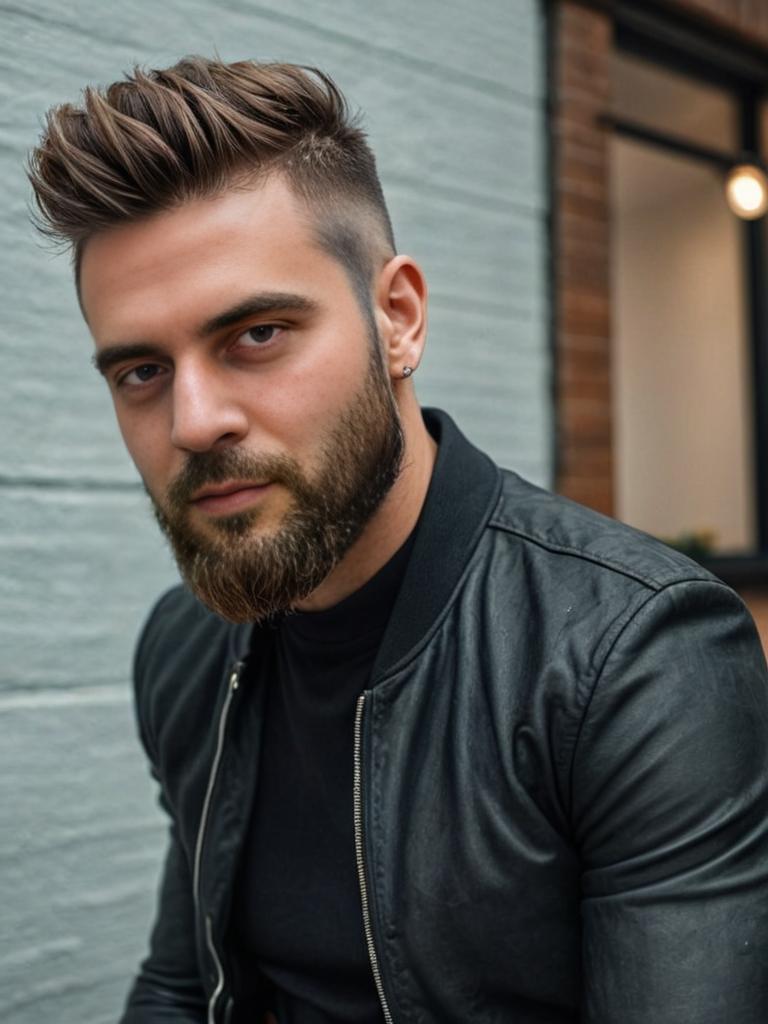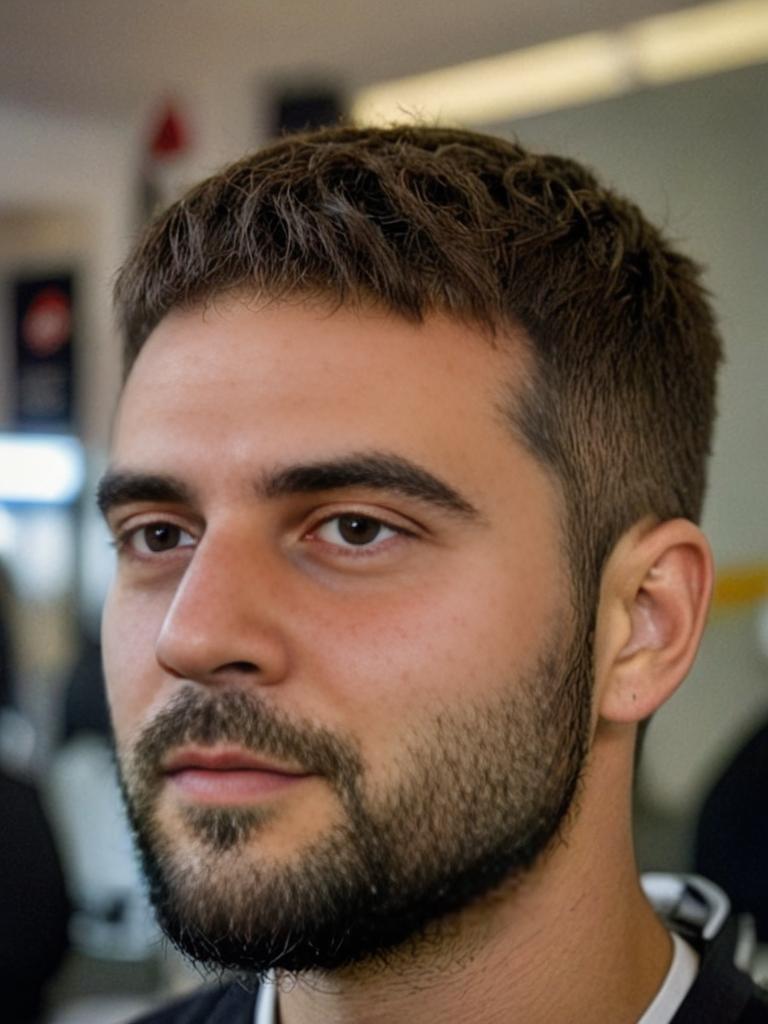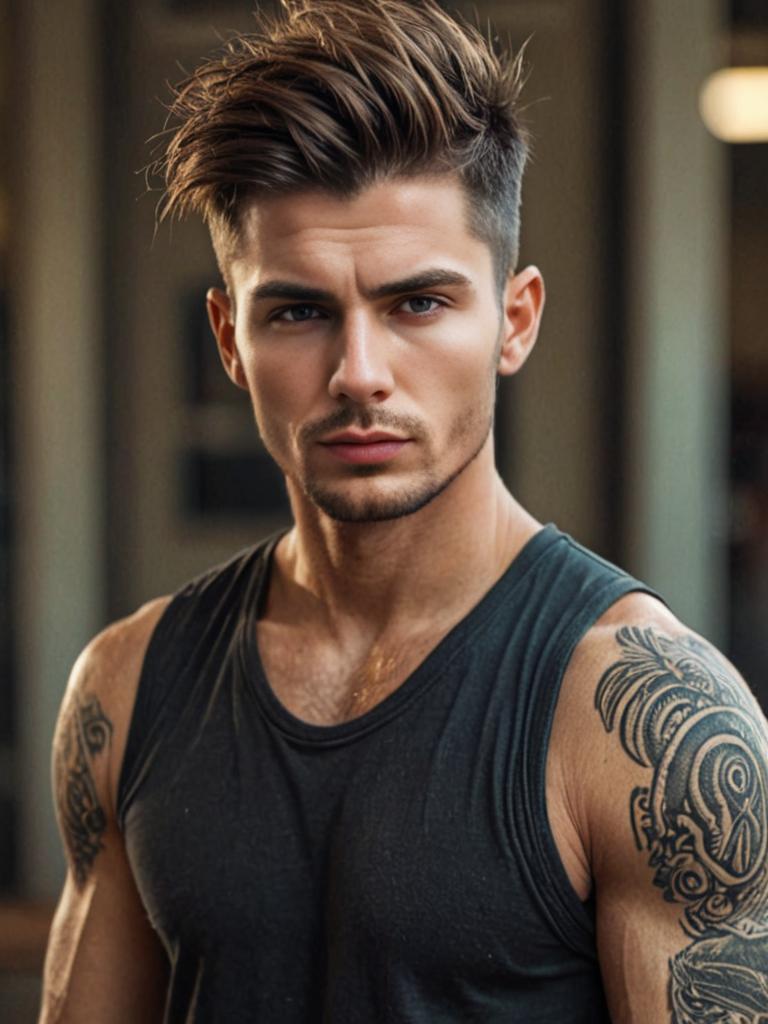How to see yourself in a fade hairstyle
See yourself in any of these images by visiting the Remix Library
Discover Your Style with a Fade Haircut
Ever wondered how you'd look sporting a stylish fade haircut? With today’s AI technology, you can see yourself with any variation of a fade haircut before even visiting a barber. Let's dive into everything you need to know about fade haircuts and how you can experiment with this trend using our AI photo generator.
What is a Fade Haircut?
A fade haircut is one of the most popular and enduring styles in men's fashion. Characterized by gradually shortening the length of hair from the top down to the natural hairline, fades can be combined with various hairstyles to suit any face shape and personal style. The versatility of fades means they can range from subtle to dramatic, depending on how short the gradual fade is cut.
Elements of a Fade Haircut
- Top: The hair on the top of the head can be left at varying lengths depending on the desired hairstyle. It could be longer for styles like pompadours or relatively shorter for more conservative looks.
- Taper: This is the gradual shortening of the hair. The taper usually starts at a point that aligns with the upper temples or just above the ears, progressing downward in length.
- Transition: The key to a good fade is a smooth transition with no visible lines where the hair length changes abruptly unless a "hard line" fade is specifically desired for style purposes.
Types of Fade Haircuts
- Low Fade Haircut: Begins just above the ears and tapers down. It's subtle and suitable for professional environments.
- Mid Fade Haircut: Starts at the level of the temples, offering a balanced look that is not too conservative or too edgy.
- High Fade Haircut: Begins higher up on the head, making a bold statement with its sharp contrast.
- Taper Fade Haircut: Involves a gradual decrease in length across the sides and back, blending into the skin without a clear line.
- Skin Fade Haircut: The hair tapers down to the skin, offering a very clean and crisp appearance.
Other variations such as the drop fade haircut, low taper fade, and medium fade haircut provide additional options, each with its unique appeal and style.
Styling and Maintenance
- Styling: The longer hair on top can be styled in numerous ways (slicked back, parted, curly, etc.), depending on personal preference and hair type. Styling products like pomades, waxes, or gels are often used to achieve the desired look.
- Maintenance: Fades require regular upkeep to maintain the sharp, tapered look, typically needing a trim every 2 to 4 weeks. Because of the precision required, it's advisable to have it done by a professional barber.
How to Do a Fade Haircut
Creating a fade haircut requires precision and understanding of how hair lengths transition smoothly. Here’s a simplified process:
- Choose Your Fade: Decide on the type of fade that suits your style—low, mid, high, or skin.
- Prepare Your Tools: You'll need a good pair of clippers with various guard sizes, a comb, and scissors.
- Define the Area: Start by defining where you want the fade to begin.
- Clipper Work: Using clippers, begin cutting from the bottom up. Switch to shorter guards as you move down.
- Blending: Use a comb and scissors to blend the transitions between different hair lengths.
- Detailing: Pay attention to the details around the ears and neckline.
For those looking to master this haircut, practicing with tutorials or seeking professional guidance is recommended.
Visualize Yourself with a Fade
Thanks to AI photo generation, you can now visualize yourself with a fade haircut without stepping into a salon. Upload your photo, select the style of fade haircut you are curious about, and let the AI work its magic. This is not only fun but also helps you make confident decisions about changing your hairstyle.
Suitability
- Face Shape: Fades can be tailored to flatter various face shapes. For instance, a pompadour with a high fade might suit a round face by adding height and structure.
- Personal Style: From subtle low fades that blend almost imperceptibly into slightly longer hair, to bold skin fades that make a dramatic statement, this style can be adapted to match a wide range of personal tastes and professional requirements.
Why Choose a Fade Haircut?
- Versatility: Works well with different types of hair and styles, from curly to straight.
- Stylish: Always in fashion, fades are a staple look that can be tailored to be as bold or subtle as you like.
- Low Maintenance: Once you get a fade, it's relatively easy to maintain and grows out nicely.
Conclusion
Fade haircuts remain a top choice for their aesthetic appeal and practicality. Whether you are an athlete, a professional in a creative field, or someone who enjoys urban fashion, there's a fade haircut that can amplify your style. Now, with AI image generation and face-swapping tools like those available on Pixu.ai, experimenting with different fade styles has never been easier. Explore your options, find your style, and step out in confidence with your new look.




